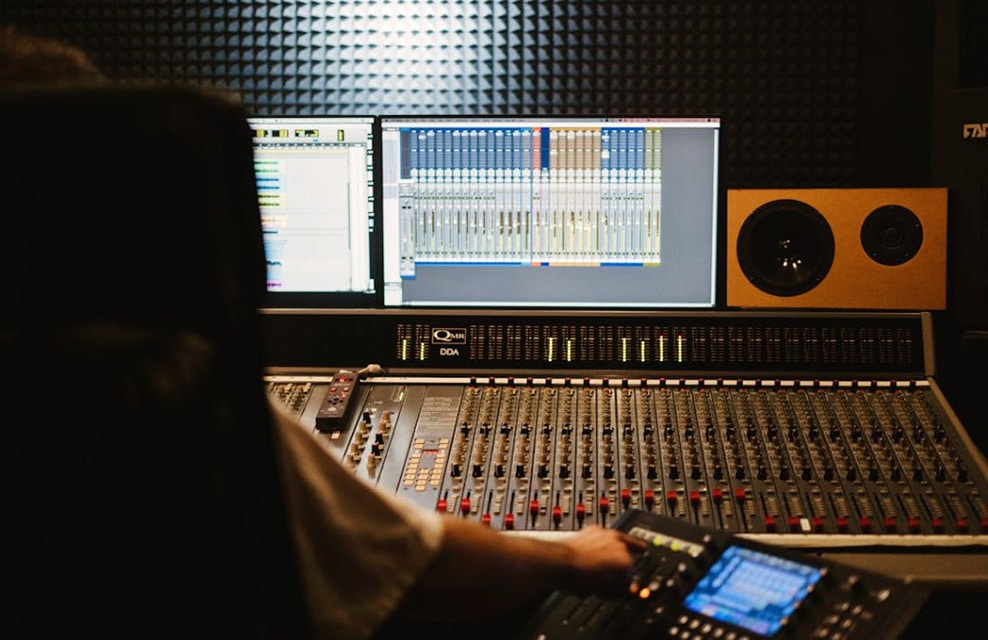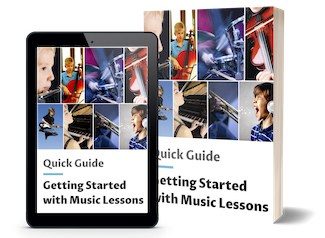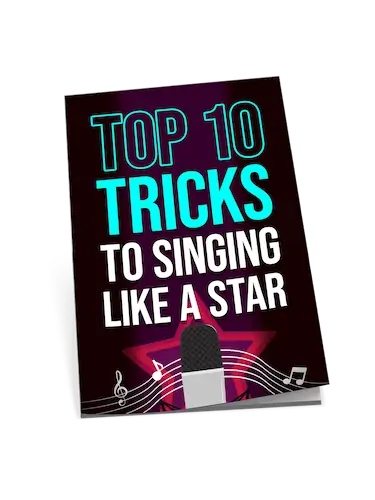Setting up a recording studio might seem overwhelming at first, but it’s exciting once you know what’s essential. Whether you’re building a professional space or a cozy home studio, the right equipment makes all the difference.
You’ll need tools to record, edit, and mix your sound effectively, no matter your level of expertise. From microphones to audio interfaces, every piece serves a purpose in bringing your creative ideas to life.
Core Recording Studio Equipment
To kickstart music production, you need a balance of high-quality hardware and software. The essentials include a reliable computer, recording software, an audio interface, and precise studio monitors.
High-Performance Computer
Your computer is the command center of your studio. It should be fast, reliable, and equipped to handle processing-heavy tasks like editing and mixing.
Many producers prefer the Apple MacBook Pro for its powerful performance and efficiency in handling music production tools. However, a quality desktop or laptop with a robust processor and at least 16GB of RAM will also do the job.
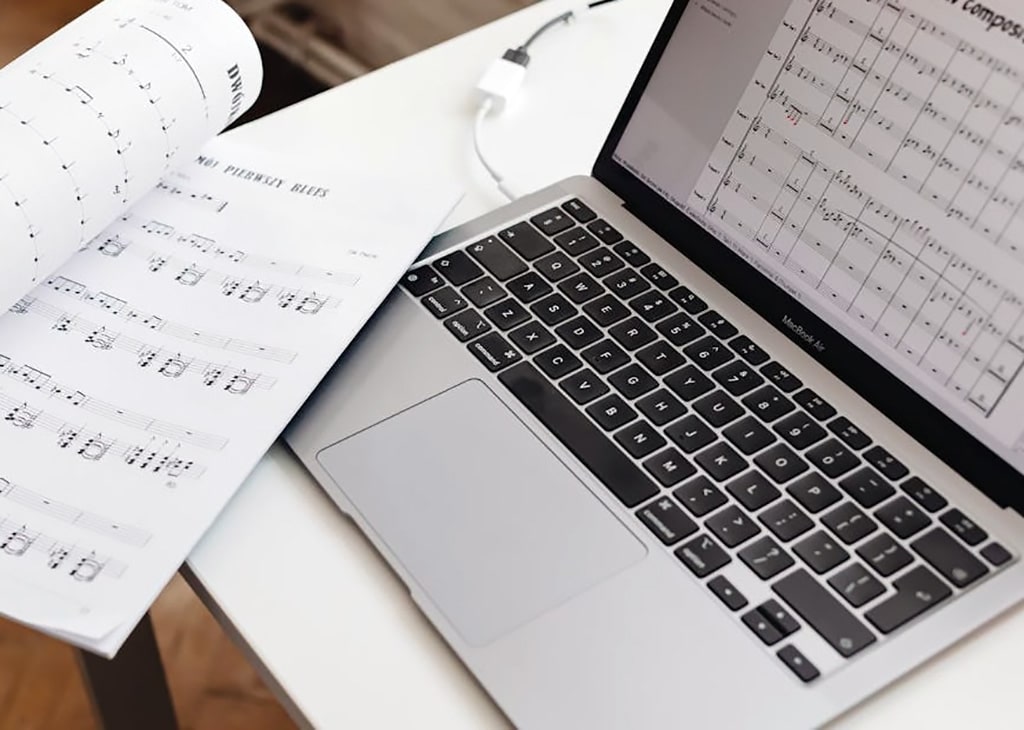
Digital Audio Workstation (DAW)
A DAW is the primary software you’ll use to record, edit, and mix your music. It’s a must-have, no exceptions.
Popular options include Pro Tools, Logic Pro, and Ableton Live, but free tools like GarageBand and Audacity are great for beginners. Choose based on your budget and style—some are better for live performances, while others shine in studio recording.
Ableton Live 11 Suite
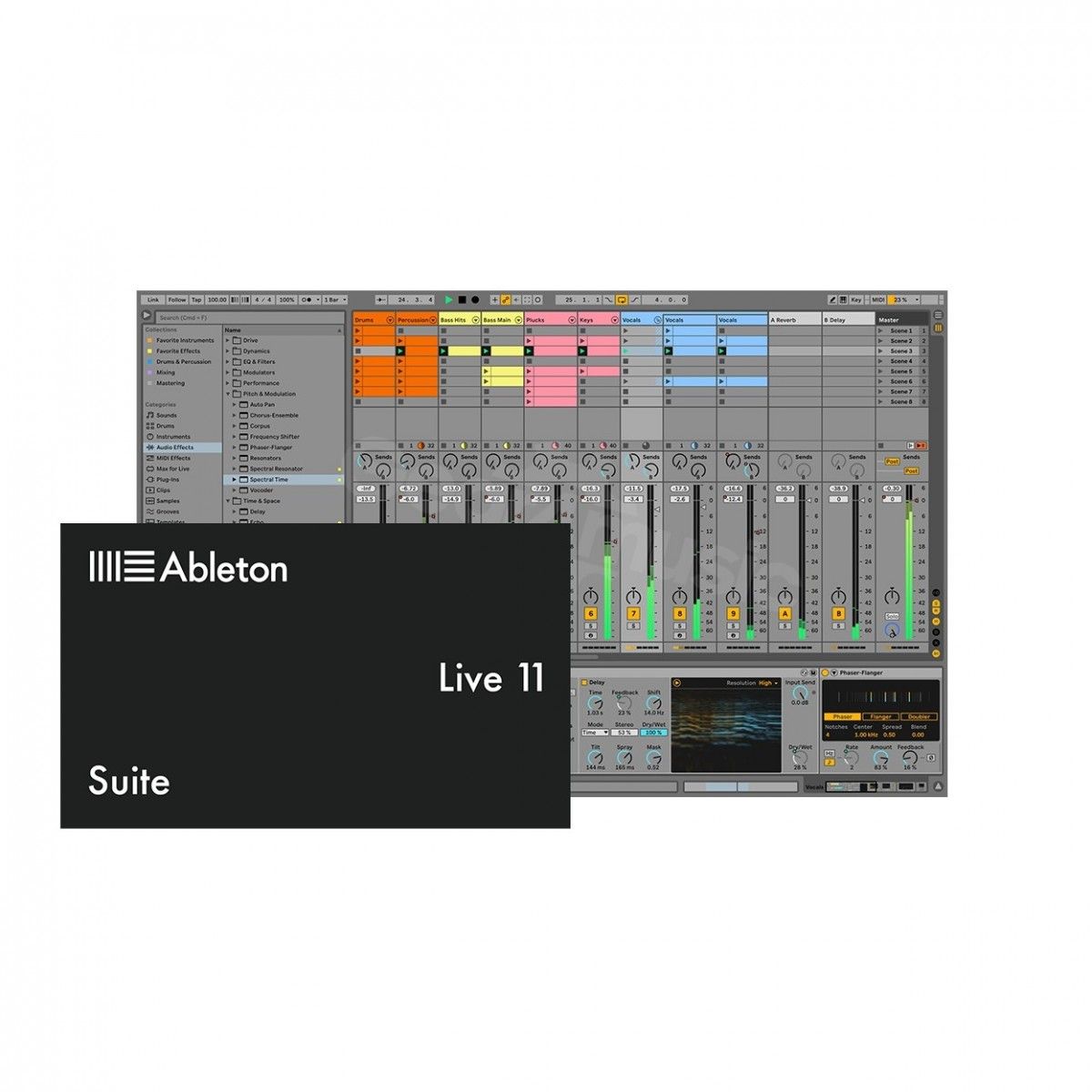
FEATURES: Latest in the award-winning digital audio workstation series.
OTHER INFO: Offers a comprehensive range of features.
- Can edit multiple tracks simultaneously with linked-track editing.
- Inclusion of Max for Live enabling users to expand the software's capabilities.
- Higher price point compared to other editions of Ableton Live.
When you click ‘Check Price’, you’ll see there are loads of great places to buy this item. Our personal favorite is Sweetwater for the US, and Thomann and Gear4Music for the UK & Europe.
They are the largest music retailers, with excellent customer service, competitive prices, really fast shipping, and the longest guarantees.
The professional musician who wrote this article combined many things,
from the product build, manufacturer’s reputation through to feedback
from other users, to create our famous TedScore™.
Audio Interface
The audio interface connects your instruments and microphones to your computer, allowing you to record and playback audio with better quality. It’s a cornerstone of every setup.
Models like the Focusrite Scarlett 2i2 or PreSonus AudioBox are excellent starters, offering high-quality mic preamps and reliable performance. They’re compact, easy to use, and well-suited for home studios.
Focusrite Scarlett 2i2
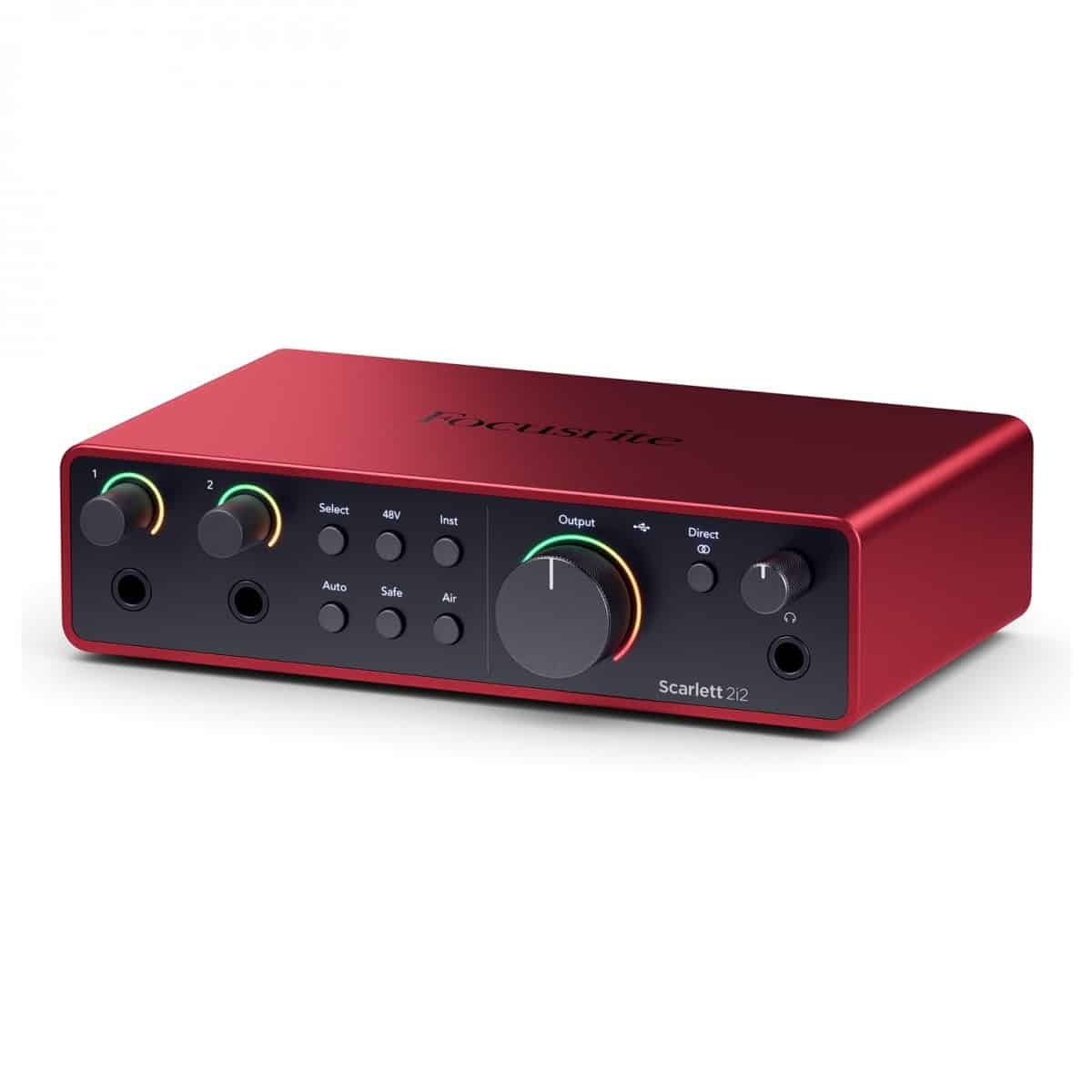
FEATURES: Comes with two XLR/line inputs and two extra line inputs
- Focusrite Control compatibility provides flexibility for setting up monitor mixes and routing.
- You can use two virtual inputs to record a stereo feed with any hardware input and software playback channels
- Enhanced monitoring features provide improved audio reference
- Audio conversion optimized to deliver top-quality sound consistently
- Does not include any pre-packaged software or plugins
When you click ‘Check Price’, you’ll see there are loads of great places to buy this item. Our personal favorite is Sweetwater for the US, and Thomann and Gear4Music for the UK & Europe.
They are the largest music retailers, with excellent customer service, competitive prices, really fast shipping, and the longest guarantees.
The professional musician who wrote this article combined many things,
from the product build, manufacturer’s reputation through to feedback
from other users, to create our famous TedScore™.
Studio Monitors
Studio monitors let you hear your music exactly as it is, without any bass or treble boost. This is essential for accurate mixing and mastering.
Brands like KRK Rokit and Yamaha HS series are popular among producers. Unlike consumer speakers, studio monitors give a flat, honest sound so you can fine-tune your tracks with precision.
Yamaha HS5
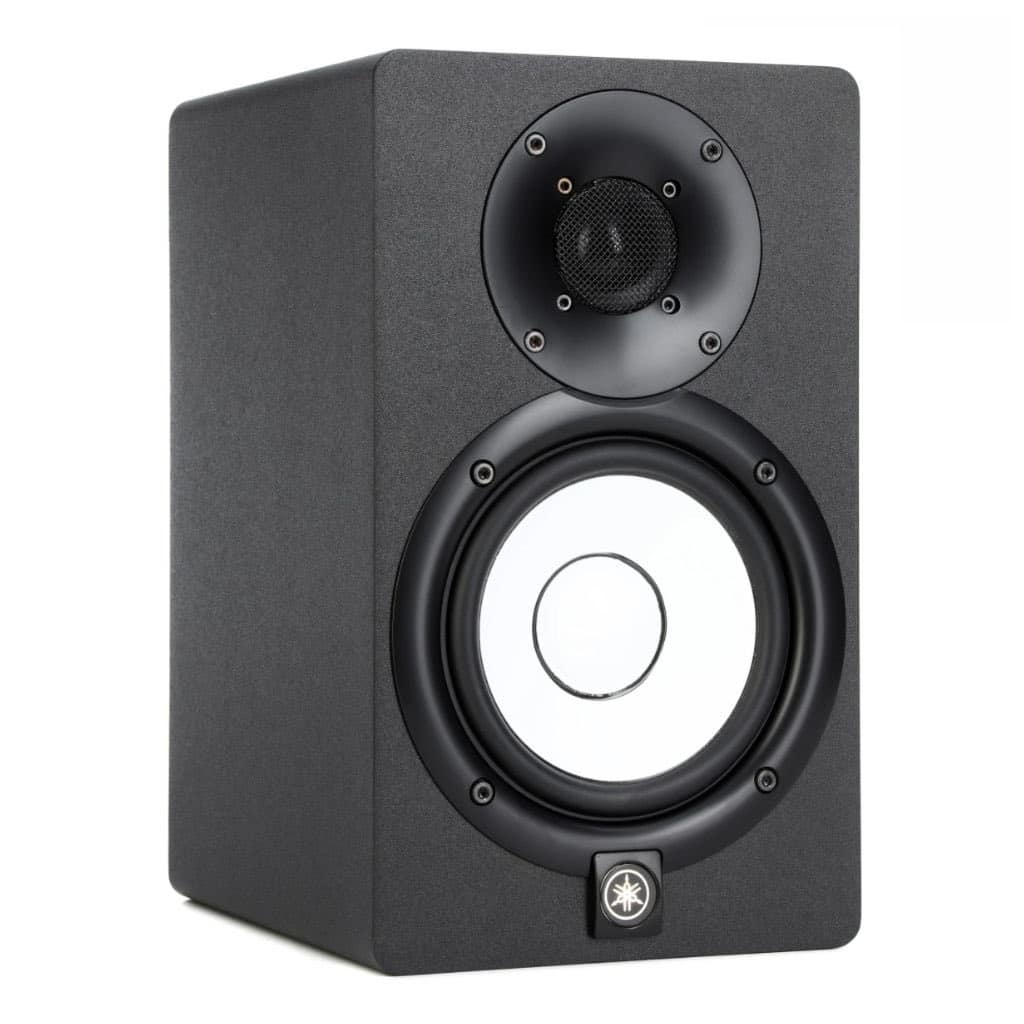
FEATURES: Bi-Amplified Design
OTHER INFO: Room Control and High Trim Response Controls
- Features a bi-amplified design with a 70-watt power amplifier, including a 45-watt low-frequency driver and a 25-watt high-frequency driver
- No Built-In Bluetooth
When you click ‘Check Price’, you’ll see there are loads of great places to buy this item. Our personal favorite is Sweetwater for the US, and Thomann and Gear4Music for the UK & Europe.
They are the largest music retailers, with excellent customer service, competitive prices, really fast shipping, and the longest guarantees.
The professional musician who wrote this article combined many things,
from the product build, manufacturer’s reputation through to feedback
from other users, to create our famous TedScore™.
Microphones and Essential Accessories
To capture audio effectively in a recording studio, you need quality microphones and essential accessories. These tools shape the sound, enhance clarity, and improve recording efficiency.
Choosing Microphone Types
Microphones are the foundation of any studio, but not all mics work the same way. Dynamic microphones, like the Shure SM57, are durable and ideal for live performances and louder instruments. Condenser microphones, such as the Rode NT1, are highly sensitive and perfect for recording vocals and acoustics due to their wide frequency response.
If you’re not sure which type to choose, prioritize versatility while staying within your budget. Start with one dynamic and one large diaphragm condenser microphone to cover a range of recording needs.
Shure SM57 Cardioid Dynamic Instrument Microphone
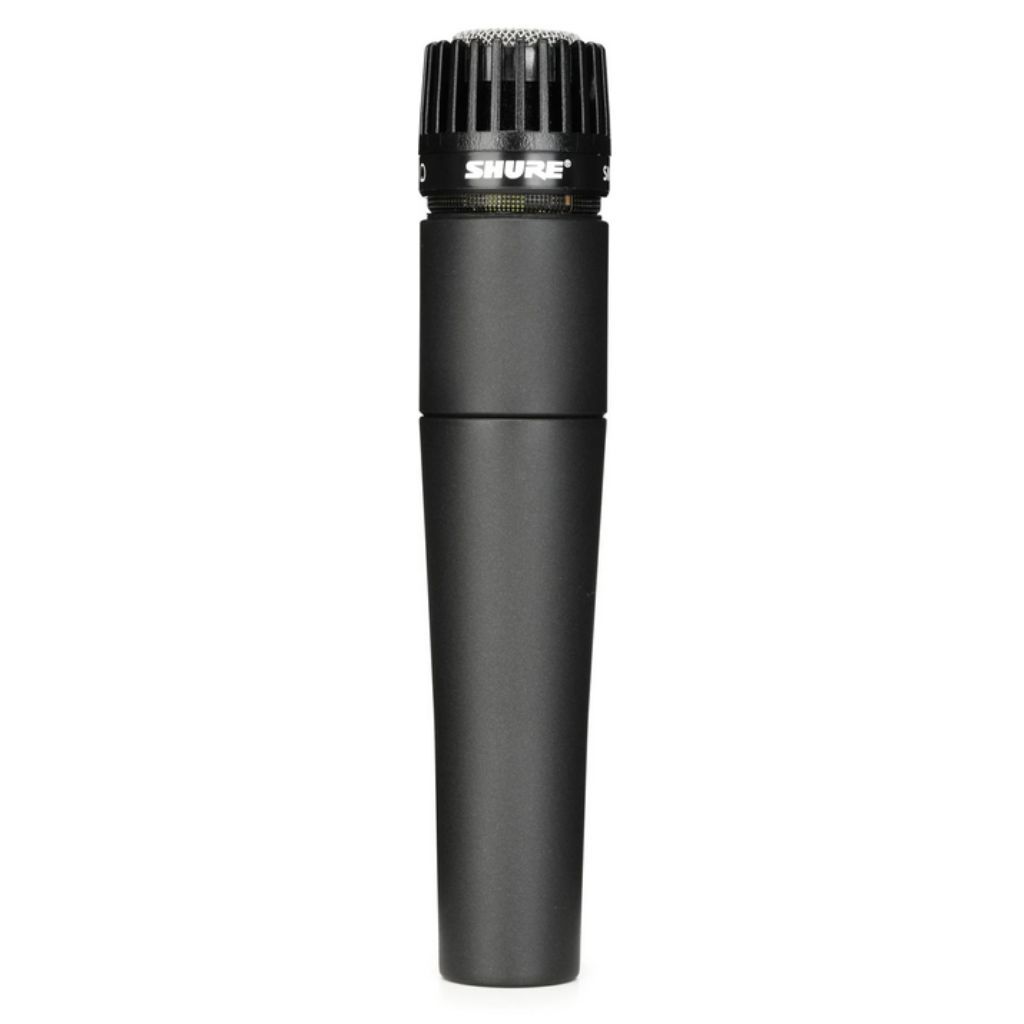
FEATURES: The most popular dynamic microphone on the planet
OTHER INFO: Excellent for capturing the sound of virtually any instrument or sound source
- Especially suitable for close-miking of instrument amps and speakers
- Built to withstand the harshest conditions, wear, and abuse
- No Cons!
When you click ‘Check Price’, you’ll see there are loads of great places to buy this item. Our personal favorite is Sweetwater for the US, and Thomann and Gear4Music for the UK & Europe.
They are the largest music retailers, with excellent customer service, competitive prices, really fast shipping, and the longest guarantees.
The professional musician who wrote this article combined many things,
from the product build, manufacturer’s reputation through to feedback
from other users, to create our famous TedScore™.
Must-Have Microphone Accessories
Accessories enhance your microphone’s performance and ensure a professional setup. Pop filters are crucial for reducing unwanted plosive sounds during vocal recording. Shock mounts minimize vibrations and external noise that can interfere with your tracks.
You’ll also need mic stands to position and secure your microphones properly. Choose sturdy, adjustable stands for flexibility and stability. Ensure you have reliable XLR cables to connect your microphones to the audio interface.
Here’s a simple checklist for microphone accessories:
| Accessory | Purpose | Example |
|---|---|---|
| Pop Filter | Reduces plosive sounds | Proscreen XL |
| Shock Mount | Limits vibrations | Rode PSM1 |
| Mic Stand | Holds microphones securely | Ultimate JamStand |
| XLR Cable | Connects mic to interface | Mogami Gold XLR Cable |
Gator Frameworks GFW-TABLET1000
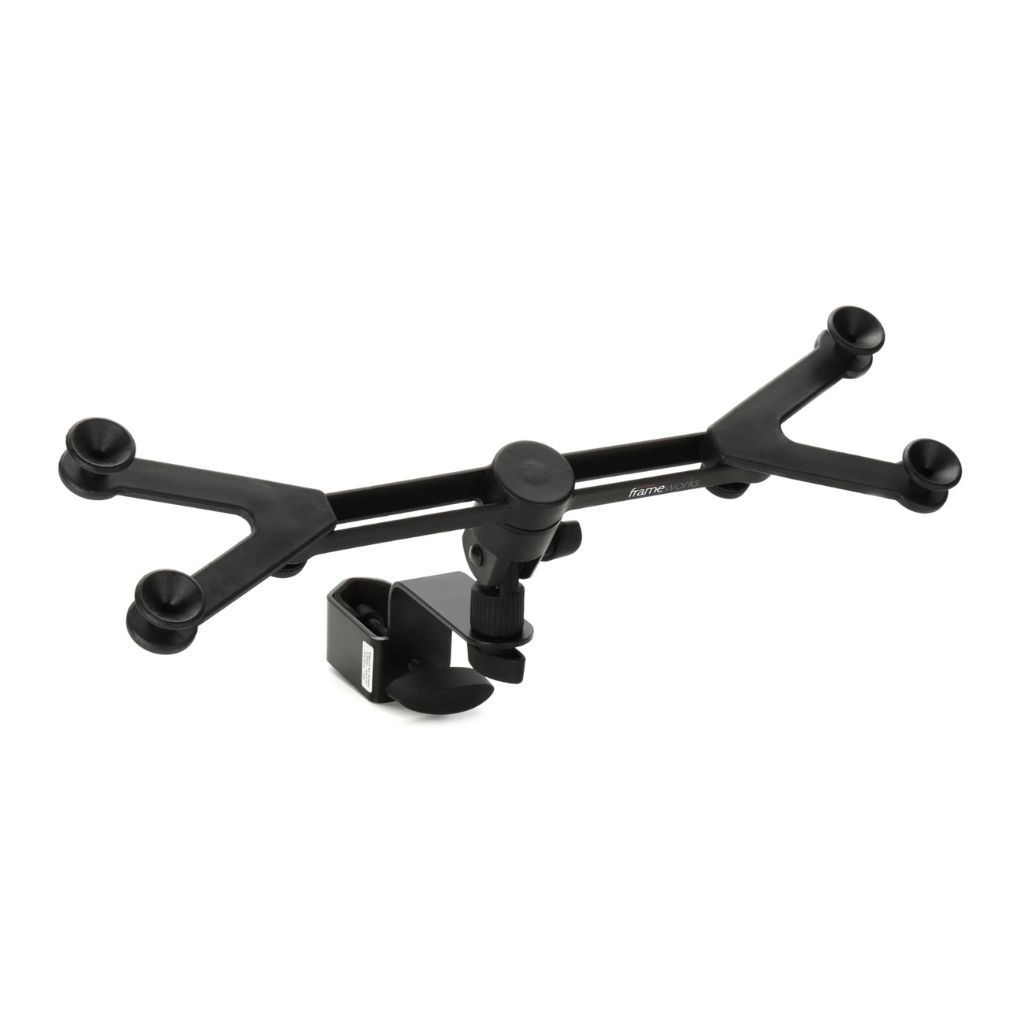
FEATURES: Attach directly to mic stand threads
OTHER INFO: Tilt adjustment makes it easy to find the ideal viewing angle
- Easily swivels between portrait and landscape orientations
- It only fits devices from 6" to 15", including the 12.9" iPad Pro
When you click ‘Check Price’, you’ll see there are loads of great places to buy this item. Our personal favorite is Sweetwater for the US, and Thomann and Gear4Music for the UK & Europe.
They are the largest music retailers, with excellent customer service, competitive prices, really fast shipping, and the longest guarantees.
The professional musician who wrote this article combined many things,
from the product build, manufacturer’s reputation through to feedback
from other users, to create our famous TedScore™.
Popular Microphone Models
Certain microphones have become staples in professional studios. The Shure SM57 is a classic dynamic mic known for its ability to handle high sound pressure levels, making it ideal for drums or guitar amps.
For vocals or nuanced instruments, the Rode NT1 large diaphragm condenser microphone is widely praised for its crisp sound and low self-noise. If you want versatility, explore small diaphragm condensers like the AKG P170, which are great for capturing precise details from acoustic guitars or cymbals.
Having a few key models in your collection allows you to adapt to various recording scenarios with ease.
Rode NT1-A

DESIGNED FOR: Vocalists, musicians, and content creators
COMES WITH: An pop shield, XLR cable, and a dust cover
FEATURES: Shockmount with detachable pop filter The NT1 mic captures smooth high frequencies Features a bipolar output buffer and JFET impedance converter
- A condenser microphone with a neutral frequency response, allowing you to adjust when mixing the vocals
- Features external shock mount and pop filter
- The recording pack comes with a dust cover
- Requires device for phantom power
When you click ‘Check Price’, you’ll see there are loads of great places to buy this item. Our personal favorite is Sweetwater for the US, and Thomann and Gear4Music for the UK & Europe.
They are the largest music retailers, with excellent customer service, competitive prices, really fast shipping, and the longest guarantees.
The professional musician who wrote this article combined many things,
from the product build, manufacturer’s reputation through to feedback
from other users, to create our famous TedScore™.
Studio Headphones and Monitoring Tools
Achieving great recordings depends on tools that provide clear and accurate audio. Studio headphones and monitoring tools are essential for precise sound reproduction and maintaining an ideal listening environment.
Selecting Studio Headphones
Choosing the right headphones is key for mixing and monitoring audio. Studio headphones are designed with a flat frequency response, so you hear sound exactly as it is, with no added bass or treble.
When selecting headphones, consider whether you need closed-back or open-back designs. Closed-back headphones prevent sound leakage during recording, while open-back options offer natural sound but can leak audio.
Here’s a quick comparison:
| Type | Benefits | Considerations |
|---|---|---|
| Closed-back | Great for isolation | May feel less breathable |
| Open-back | Natural, spacious sound | Not ideal for recording |
Comfort is equally important. Look for padded ear cups and adjustable headbands to ensure you can use them for extended periods without discomfort.
Monitor Isolation and Placement
Proper isolation and placement of studio monitors make a big difference in sound quality. Placing monitors on isolation pads reduces vibrations and prevents sound from being colored by your desk or stand.
Use near-field monitors positioned at ear level and angled toward your listening position for clean, accurate sound. Maintain an equal distance between monitors and your ears to create a balanced “sweet spot.”
Tips for setup:
- Avoid placing monitors directly on hard surfaces. Isolation pads help prevent distortion.
- Position monitors symmetrically in your studio for consistent sound reflection.
Cabling and Connectivity Solutions
Getting the right cables and ensuring proper connectivity is vital for your studio setup. High-quality cables and effective management help prevent signal loss, minimize noise, and keep your workflow smooth.
XLR and Instrument Cables
XLR cables are your go-to for microphones and other balanced audio connections. They provide clear, noise-free signals and are the industry standard for professional studios. XLR cables feature three pins, ensuring balanced signal transmission and reducing interference.
For instruments like electric guitars or keyboards, instrument cables with TS connectors are essential. These cables transmit unbalanced signals and should be kept short to avoid unwanted noise. Always choose cables with good shielding for better durability and signal reliability.
| Cable Type | Use Case | Connector Type |
|---|---|---|
| XLR | Microphones, balanced gear | Balanced (3 pins) |
| TS (Instrument Cable) | Guitars, bass, keyboards | Unbalanced (2 pins) |
Essentials XLR Microphone Cable
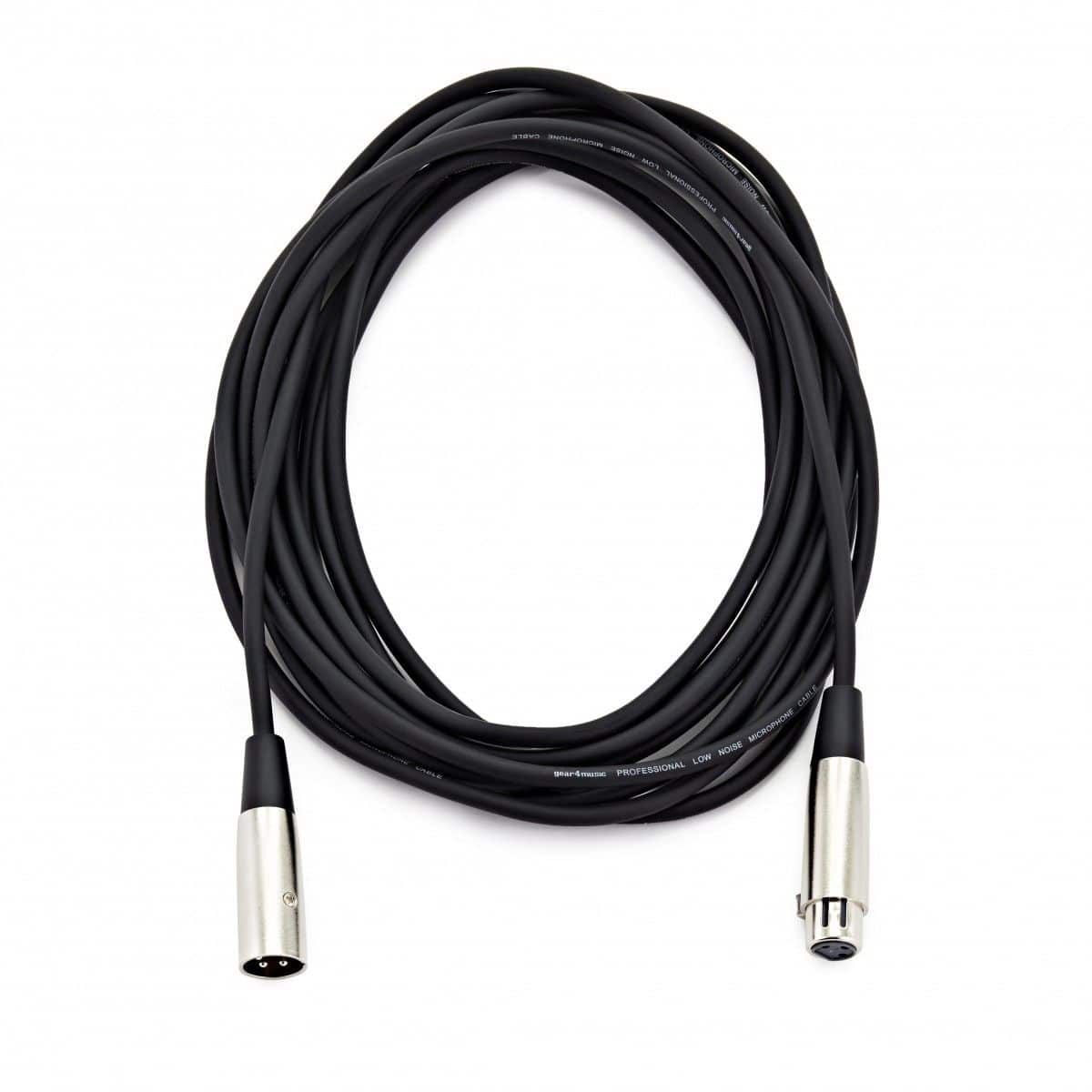
FEATURES: 6m / 19.6ft
OTHER INFO: Male Balanced XLR - Female Balanced XLR connection points
- Suitable for connecting your microphones
- Oxygen free cable
- Larger size and bulkier design
When you click ‘Check Price’, you’ll see there are loads of great places to buy this item. Our personal favorite is Sweetwater for the US, and Thomann and Gear4Music for the UK & Europe.
They are the largest music retailers, with excellent customer service, competitive prices, really fast shipping, and the longest guarantees.
The professional musician who wrote this article combined many things,
from the product build, manufacturer’s reputation through to feedback
from other users, to create our famous TedScore™.
Cable Management and Adapters
Messy cables are not just an eyesore—they can cause confusion and delay. Keep things neat with cable ties, mounts, or specialized organizers. Labeling cables can save you from future headaches.
Adapters are your secret weapon for compatibility. Whether it’s converting a TRS plug to XLR or connecting different types of audio gear, having the right adapters in your kit is crucial. Invest in durable, high-quality options to avoid replacements.
Pro Tip: Use a patchbay for streamlined connectivity, letting you manage connections without constant plugging and unplugging.
Acoustic Treatment and Soundproofing
Your recording studio’s sound quality depends on controlling unwanted noise and optimizing how sound behaves in the room. Proper acoustic treatment and soundproofing ensure clear, professional-grade audio by reducing echoes, managing bass, and isolating sound.
Bass Traps and Acoustic Panels
Bass traps help control low-frequency sound waves that can overwhelm your recording space. These traps are thicker than standard acoustic panels and are typically placed in room corners to prevent bass build-up.
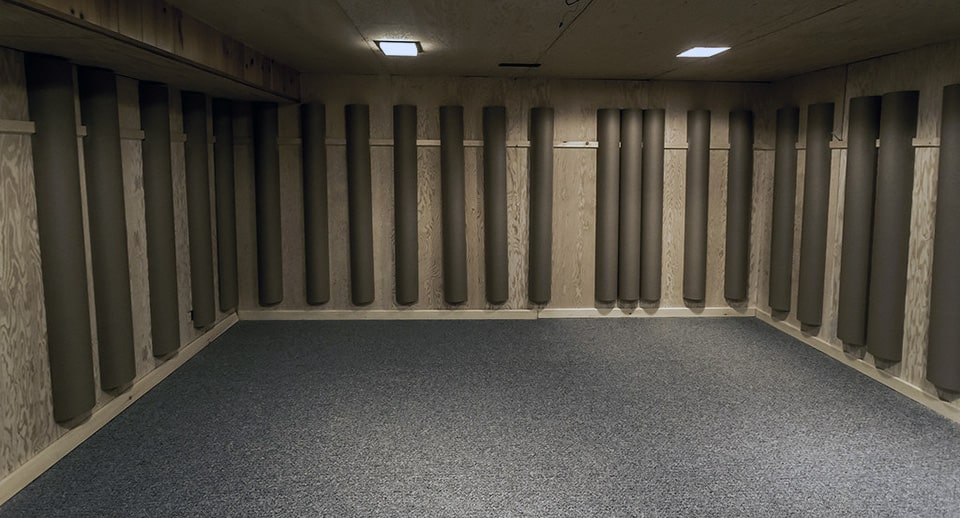
Acoustic panels, crafted from sound-absorbent materials, reduce reverberation and echoes. They’re ideal for recording clear audio and can be installed on walls to improve sound clarity. Popular choices include the MuffleWall, which offers high sound absorption, and other cost-effective options for smaller budgets.
Foam Panels and Diffusers
Foam panels are lightweight and easy-to-install tools for softening reflections and taming mid- and high-frequency sound. Positioned strategically, they create a crisp sound environment for recordings.
Diffusers scatter sound waves evenly rather than absorbing them. They help balance acoustics by preventing unwanted focus points and creating a more natural sound within the room. These are especially useful if you seek clarity without complete absorption.
Reflection Filters and Isolation
Foam panels are lightweight and easy-to-install tools for softening reflections and taming mid- and high-frequency sound. Positioned strategically, they create a crisp sound environment for recordings.
Diffusers scatter sound waves evenly rather than absorbing them. They help balance acoustics by preventing unwanted focus points and creating a more natural sound within the room. These are especially useful if you seek clarity without complete absorption.
Desks, Furniture, and Studio Workflow
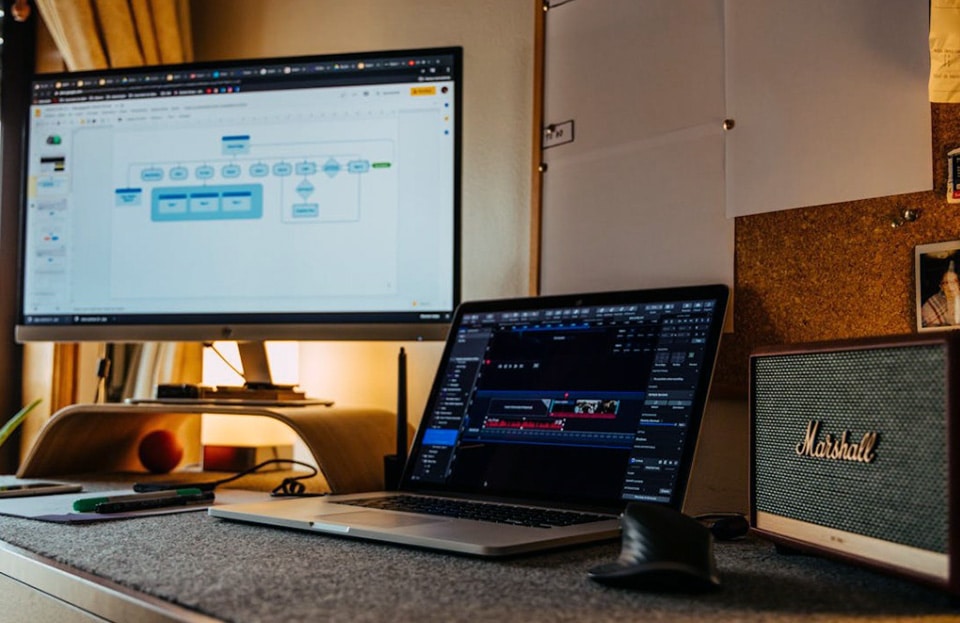
A studio desk is the centerpiece of your home recording studio. Choose a desk that matches the size of your space and provides enough surface area for your gear.
Look for features like rack mounts, keyboard trays, and built-in cable management, which make your setup much more functional. For compact setups, a desk with multiple tiers can save space while still keeping monitors, MIDI controllers, and other equipment accessible.
If you spend long hours recording, prioritize an ergonomic design. Adjustable height desks are an excellent option, as they allow you to alternate between sitting and stand
Quick Comparison of Features:
| Feature | Benefit |
|---|---|
| Keyboard Shelf | Tucks away keyboards to save space |
| Monitor Stand | Positions speakers at ear level |
| Rack Space | Convenient for mounting essential gear |
| Built-In Cable Management | Reduces clutter and tangling |
Organizing Your Recording Space
Efficient furniture placement can transform your home recording studio into a workflow-friendly environment. Keep frequently used recording studio equipment, like interfaces or mixers, in arm’s reach.
To minimize clutter, invest in items like shelves and drawer units for storage. Even compact studios can stay tidy with smart solutions like rolling carts or wall-mounted hooks for headphones and cables.
Having a dedicated spot for everything boosts productivity and prevents interruptions during creative sessions.
Expansion Tools and Advanced Accessories
Adding a MIDI controller gives you the freedom to create and manipulate digital instruments with precision. Look for controllers with features like velocity-sensitive keys, drum pads, or assignable knobs to tailor your workflow.
For example, the Akai MPK Mini is compact yet versatile, ideal for small spaces. If you need more comprehensive features, a full-sized controller like the Arturia KeyLab might be worth the investment.
External hard drives solve the problem of storage limitations for heavy audio recording projects. Opt for SSDs like the Samsung T7 for lightning-fast speeds or HDDs such as the Seagate Backup Plus for cost-effective, large-capacity storage.
You’ll also want drives with USB 3.0 or higher for faster data transfers. Organizing your recordings and software files here ensures your main system runs smoothly.
Upgrading Studio Equipment
To sharpen your sound, upgrading your studio monitors and headphones can make a huge difference. Choose monitors with accurate frequency response, such as the Yamaha HS8, for better mix clarity.
For headphones, closed-back designs like the Audio-Technica M50x are perfect for recording, while open-back ones like the Beyerdynamic DT 990 Pro are suited for mixing.
If you’re using basic audio interfaces, consider stepping up to models with higher input/output options and better preamps. Products like the Focusrite Clarett+ series offer cleaner audio and expandability for professional recording.
Finally, upgrading your recording software can introduce advanced editing tools and plugins. Programs like Avid Pro Tools or Ableton Live Suite unlock features that let you explore creative possibilities without limits.
To build a recording studio, you’ll need specific equipment tailored to your goals and space. From essential tools to acoustic treatments, every item plays a crucial role in achieving professional-quality recordings.
FAQ's
You’ll need a computer with sufficient processing power and a reliable digital audio workstation (DAW) for recording and editing. Key tools also include an audio interface, microphones, headphones, studio monitors, and necessary cables.
Don’t forget accessories like microphone stands and pop filters to enhance functionality and recording quality.
Condenser microphones are ideal for capturing vocals and delicate sounds due to their sensitivity. Dynamic microphones excel in capturing louder sound sources like drums or guitar amps and are built for durability.
Ribbon microphones are another option if you’re seeking to record sound with a vintage feel, but they often require careful handling.
Acoustic panels help absorb sound reflections and improve clarity within the room. Bass traps are essential to tame low-frequency buildup, which can muddy recordings.
Diffusers ensure sound disperses naturally and prevent the room from sounding overly “dead.”
Consider how many input and output channels you need—this depends on whether you’re recording solo or with multiple instruments. Look for an interface with high-quality preamps to enhance microphone recordings.
Think about compatibility with your computer and DAW to ensure seamless integration.
Start with a computer, DAW software, an audio interface, a good microphone, and headphones or studio monitors. Keep it simple to avoid unnecessary expense.
Add accessories like pop filters and mic stands as you grow to improve recording results without overspending.
Choose monitors with a flat frequency response to hear your recordings accurately, without added coloration. Consider the size of the monitors relative to your room size for the best sound balance.
Isolation stands or pads can prevent vibrations and improve sound clarity during playback.


